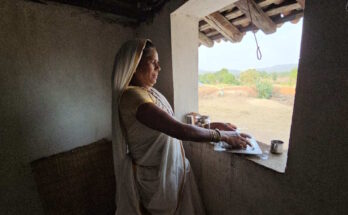450 sq km area of sparse forest has been converted into dense forest
Raipur, 20 February 2025

Bastar has recorded a significant increase in forest cover density, which is clearly reflected in the data of the recently published India State of Forest Report. This achievement is the result of continuous efforts made by the Chhattisgarh Forest Department under the leadership of Chief Minister Shri Vishnu Dev Sai and guidance of Forest Minister Shri Kedar Kashyap. The increase in forest cover density in Bastar is the result of Chhattisgarh’s environmental protection policy and sustainable forest management. Increase in forest density will also play an important role in biodiversity conservation, ecological balance and climate improvement.
Bastar, famous for its dense forests, has been a primary focus area for forest conservation and promotion. According to data obtained from the satellite-based LISS-III sensor by the Forest Survey of India (FSI), Dehradun, the forest cover category has improved significantly in many areas of Bastar.
According to ISFR, 152 sq km forest area has converted from moderately dense forest to very dense forest. Besides, 93 sq km land has converted from non-forest to open forest, while 156 sq km area has converted from open forest to moderately dense forest. 19 sq km area has upgraded to OF dense forest and 18 sq km area has upgraded from small scrub to open forest.
Positive change in forest cover has also been recorded in Indravati National Park, where 23 sq km has transformed from moderately dense forest to very dense forest and 16 sq km from open forest to moderately dense forest. According to this report, Bijapur Forest Division has recorded the highest increase, where 68 sq km area has transformed from open forest to moderately dense forest and 56 sq km from moderately dense forest to very dense forest.
On this achievement, Principal Chief Conservator of Forests and Chief of Forest Force, Shri V. Srinivas Rao said that this significant increase in forest cover has been possible due to the scientific and proactive efforts of the Forest Department. He said that community participation and strategic conservation measures have strengthened the green landscape of Bastar.
This improvement in forest cover density has been possible due to continuous monitoring, water and soil conservation, invasive weed removal, forest-fire prevention strategies and community-led afforestation campaigns. Participation of Joint Forest Management Committees and tribal communities of Bastar have also contributed significantly to this success




